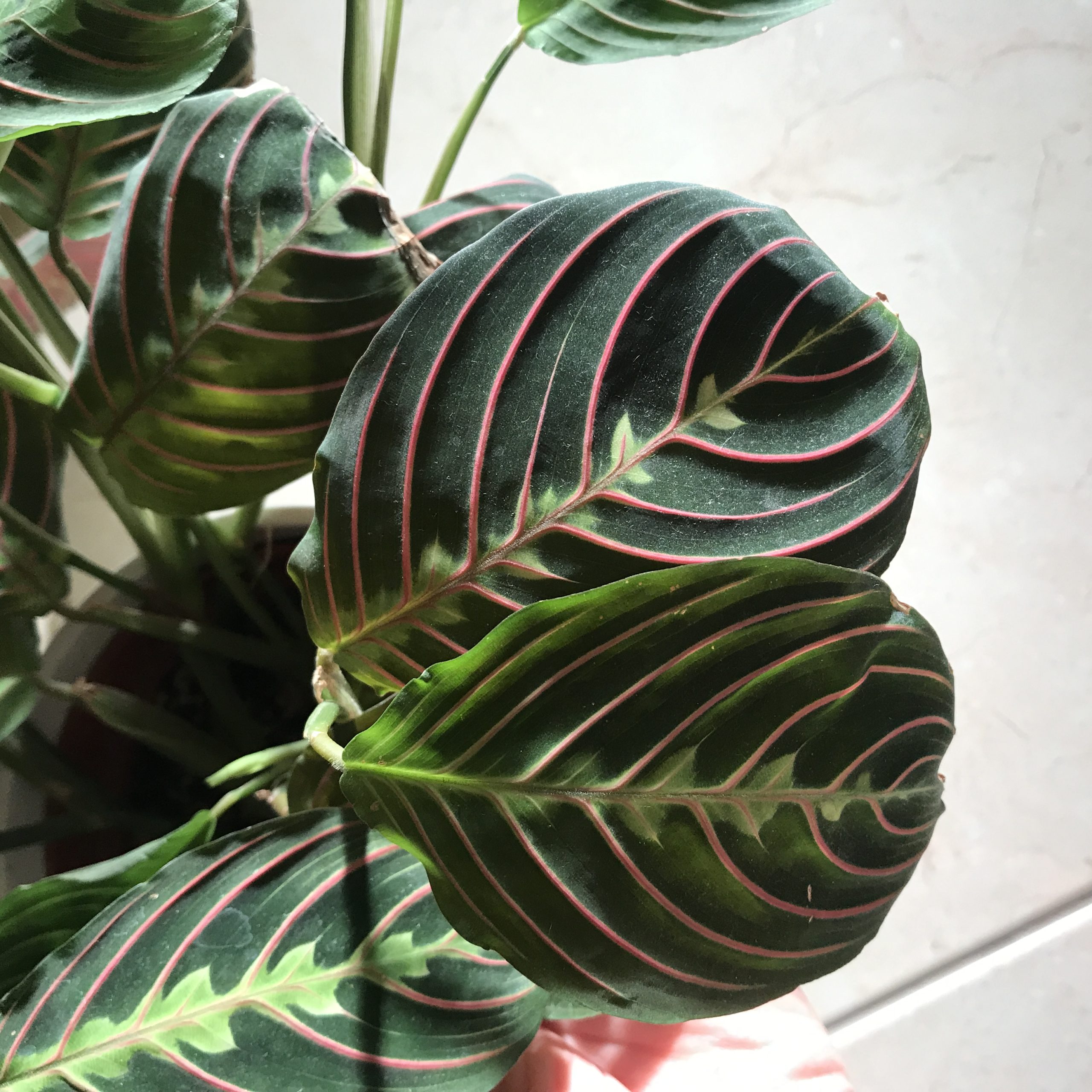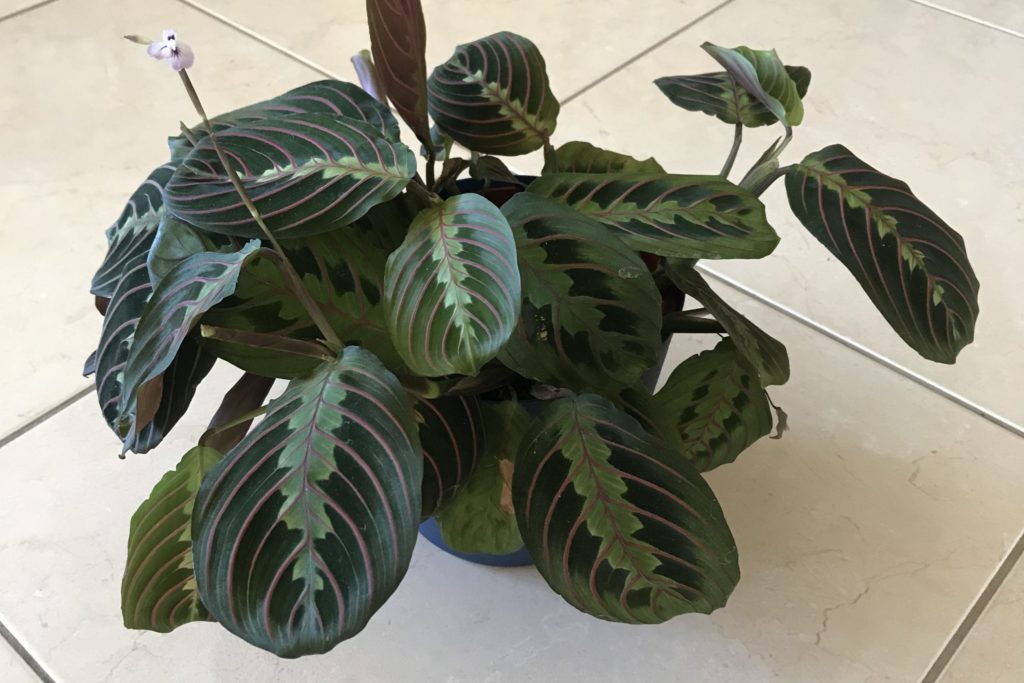A short and simple guide to maranta plants


Hello from my lone surviving prayer plant! I am gravely fearful of any plant that requires too much humidity because I live in such a dry little nook of California. And guess what? Prayer plants *love* humidity! While I adore how prayer plants look with their whimsical and intricate foliage patterns, I’d be remiss not to mention that I’ve killed a few in my days as a plant parent.


This maranta is an exception — it was an impulse buy at Livermore’s Grocery Outlet a few months back. And it was only $7 for a full, six-inch plant! If you’re a newbie to prayer plants who wants to try your hand at caring for one, my advice is to always get one with a good root system. Bigger plants can be a bit more expensive, but smaller ones are a gamble since their roots usually aren’t as established. The good news is that you can usually get sizable plants for under $15 from stores like Walmart, Lowe’s, Grocery Outlet, and Trader Joe’s, so keep your eyes peeled!
Identifying a Maranta Plant
Maranta is the type-genus of Marantaceae, and it’s named after the Italian physician and botanist Bartolomeo Maranta. Maranta and calatheas are closely related — they’re both considered prayer plants. Both are also relatively thirsty and sensitive to strong sunlight. The difference? Maranta tend to be velvety in texture, whereas calatheas are often glossier. From my experience, marantas are more resilient in harsh conditions.
My specific plant is a maranta leuconeura “tricolor.” So let’s talk about this maranta plant. It’s native to the American tropics, and indeed it loves a tropical environment. It’s called a prayer plant because its leaves stay flat during the day and fold up at night, much like praying hands. The prayer plant has dark green elliptical leaves with silvery red fishbone-style veins from the midrib to the margins. Look beneath the foliage, and you’ll find that they’re a burgundy on the bottom. (Hey, they’re the Louboutins of the plant world, in my humble opinion.) My favorite thing about these plants is how they push out new leaves — the foliage emerges as rolled-up baby tubes that take their sweet time unfurling. They also have small purple blooms throughout the year! The flowers are tiny and ephemeral, but they add a lovely touch to the plant.
Caring For Your Maranta Plant
While it’s not as scary as a fern, the maranta plant loves moist soil and humid air. It thrives in temperatures between 65 to 85 degrees Fahrenheit in medium indirect sunlight. Marantas enjoy diluted liquid fertilizer every two weeks throughout the spring. Go easy on the fertilizer, though, since too much can cause leaf burn!
The most common problem that I encounter with the maranta are brown tips and shrivelled leaves. Brown leaves can come from a whole rodeo of factors, but the top culprits are underwatering, low humidity, and overexposure. Crispy tips, specifically, are often due to the salts in water — the brown edges aren’t very aesthetically pleasing, but they don’t harm your plant’s health. Filtered water can ameliorate this, though I just leave out my tap water because I’m lazy. If you’ve got faded leaves, only give your plant indirect (not direct!) sunlight to avoid further dullness in appearance.
So, marantas really love water. Yet it’s certainly possible to overwater these plants, as much as they love a dose of hydration. The telltale signs of an overwatered plant are yellow leaves and disintegrating roots. During the winter, you should cut back on watering. If you notice any root rot, repot your plant into fresh new soil! All-purpose potting soil should do the trick as long as it’s well-draining.
The good news is that the maranta usually doesn’t get any pests. If you do see any unwanted critters, give your plant a good spray with water and treat the foliage with rubbing alcohol and/or neem oil.
So, are you ready to try your hand at a prayer plant? While they’re not the easiest plants to care for, their beautiful texture make the potential heartache so worth it, in my humble opinion. Now that winter’s coming, I’m almost keen on buying more prayer plants, what do you think?
Sources
- https://www.thespruce.com/grow-maranta-inside-1902647
- https://plants.ces.ncsu.edu/plants/maranta-leuconeura/
- https://www.thesill.com/blogs/plants-101/how-to-care-for-maranta-prayer-plant
- http://www.missouribotanicalgarden.org/PlantFinder/PlantFinderDetails.aspx?kempercode=b604
- https://libguides.nybg.org/prayerplant
Recent Posts
Upcycling thrift store finds into indoor gardening accessories
Now that spring is in full swing, I find myself, yet again, entranced by the…
A recap of the Manteca Antique Fair
You’d think there wouldn’t be much going on in a city named after lard, but…
7 thrifted Valentine’s Day gift ideas
As a singleton over the last few years, I haven’t given Valentine’s Day much thought.…
Estate sale tips & tricks: Everything you need to know about shopping at estate sales
Not to brag, but I’ve been shopping secondhand since my time in the womb. When…
How to ship vintage wares safely: Tips for sending glass and porcelain items in the mail
This holiday season, I’ve been cutting down boxes as much as I’ve been clickety-clacking away…
The life-changing magic of OxiClean White Revive: Cleaning thrifted clothes with OxiClean
As the patron saint of germaphobes, it’s kind of a miracle that I more or…